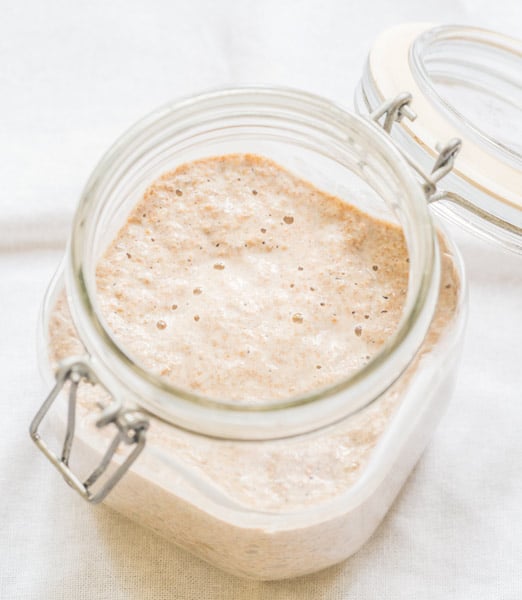In this brief article, you’ll find out exactly what the difference is between direct and indirect pizza dough. You may have heard people use the terms below. You won’t be in the dark much longer!

All pizza is delicious, we know that! But what’s the difference between direct and indirect pizza? And is one better than the other? We’re about to find out…
Direct pizza dough, or “straight dough” is the most simple and common way of making pizza dough. This is where all the ingredients are mixed together at the same time, in 1 single process.

The dough is then proved, before being made into pizza. The direct method isn’t actually related to the ingredients used, it simply describes the proccess.
This should become more clear when we discuss the indirect method.
Also, you can check out my article (with a recipe) on authentic Neapolitan direct dough here. You can learn much more about the process, and follow along with the recipe if you want to try it out.

Unlike the direct method, the indirect method has 2 phases of dough making. It involves 2 proves of dough, rather than just 1.
In the first phase, the dough is known as the “preferment”. This is usually just a mixture of equal amounts of flour and water, with a small amount of yeast. With direct dough, this phase doesn’t exist.

The preferment proves like a normal dough and then the rest of the ingredients are added to make the final dough. This dough is then proved again and then it’s ready to bake.
There are 3 common types of indirect pizza dough. These are sourdough, poolish, and biga. Although each one is different, they all use essentially the same process.
Of the 3, sourdough and poolish are probably the most common types of indirect dough. They both consist of equal amounts of flour and water. The difference is that sourdough contains wild yeast, whereas poolish contains baker’s yeast.

You may have heard the word “starter” before with relation to sourdough. This is simply the term used for the sourdough preferement – a “sourdough starter”. With poolish, the term for the preferment is the “poolish”, although I don’t think anyone would complain if you called it a “starter” either.
The reason for making indirect dough is that you tend to get a better fermentation. This is because the yeast is already active (in the preferment) before being added to the main dough.
In general, you tend to end up with a dough that has improved flavour and texture.

The downside is that the process tends to take a little longer. With a little practice though, most people shouldn’t have any trouble with indirect dough.
I highly recommend that everyone tries making indirect pizza dough once you’ve become confident at direct dough. You may be amazed at how good your dough turns out!
Poolish can be considered an easier version of sourdough, which is why I recommend that people new to indirect dough start there.
For more information, you can check out my article (with a recipe) on poolish here.

I would recommend trying sourdough once you’re confident with poolish (unless you really want to dive in!). Sourdough is typically a bit trickier and a bit more work but it does offer more potential in terms of flavour. This is especially true if like a slightly sour flavours (that are also quite complex).
Feel free to take a look at my article on what sourdough pizza is here.
My article on building your sourdough starter can be found here.
Once you have built your starter, you can move onto my sourdough pizza recipe here.

Both direct dough and indirect dough are valid ways of making pizza. One isn’t necessarily better than the other, it comes down to personal preference.
Having said that, I do think that you can build more flavour and texture with the indirect method. But that doesn’t mean that everyone will prefer pizza made with either sourdough, poolish, or biga.

Some people prefer the neutral flavour of direct dough. For some people, the effort required with indirect dough simply isn’t worth it. I totally understand.
I do think that everyone should give indirect dough a try. For me, sourdough and poolish are my favourite ways to make pizza.
As long as I’m prepared, I don’t find the indirect method to be too much extra work. If I’m in a pinch though, I’ll use the direct method for sure!

Hope this article has helped, now let’s get making some pizza!

I’m Tom Rothwell and I’m super passionate about all kinds of homemade pizza! In the last few years I've been on a quest to find the perfect pizza. Now I'm sharing what I've found out with the world!

If you're interested in hiring me for your event in the UK, feel free to check out my website with the link below.
Pizza Catering

I often get asked what type of oven I use for my pizzas. Well, I use a pizza oven made by a company called Ooni.
The range of pizza ovens that Ooni offers is just brilliant. They cover all bases, and all price points. There's affordable and portable models such as the Fyra 12 Pizza Oven and then there's state-of-the-art models such as the Karu 16 Pizza Oven pictured below.
In all honesty, I would say that the oven makes a huge difference. If you're looking to make authentic Italian pizza, a pizza oven is a must.
By clicking the link below and purchasing from Ooni, you would be supporting this website. I've been using their ovens for a long time now and I wouldn't recommend them if I didn't believe in their products.
Time to make some amazing pizza!

I’m Tom Rothwell and I’m super passionate about all kinds of homemade pizza! In the last few years I've been on a quest to find the perfect pizza. Now I'm sharing what I've found out with the world!

If you're interested in hiring me for your event in the UK, feel free to check out my website with the link below.
Pizza Catering